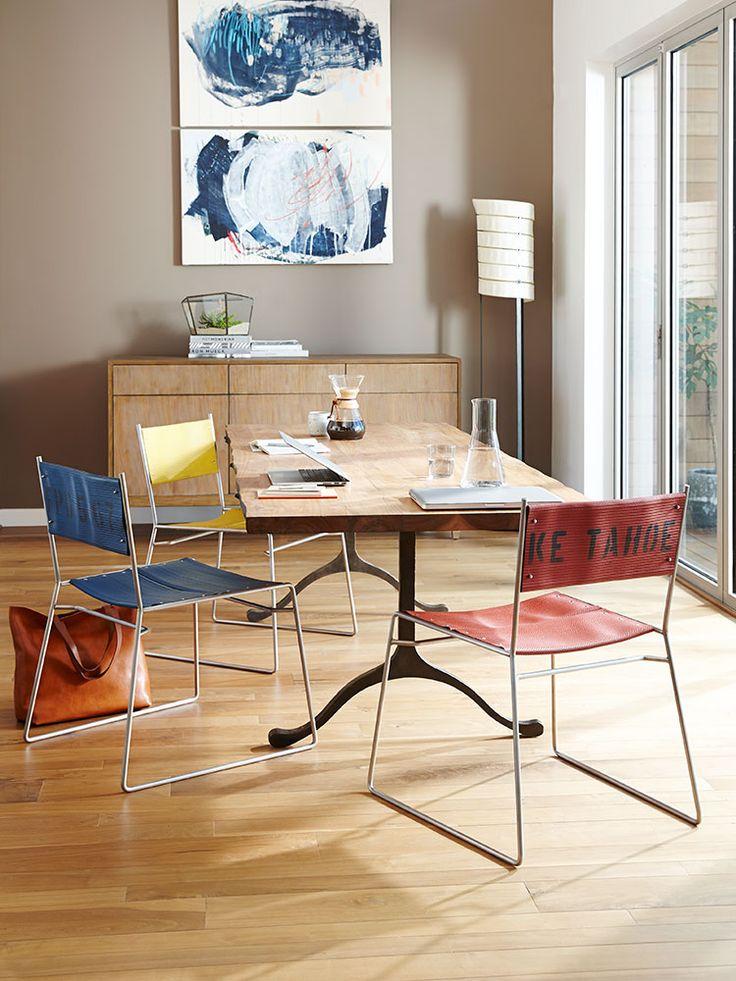
By Rachel Schohn
Upcycling isn’t new, but the term is. It’s a way of repurposing what we have, to create an even better or higher purpose use than originally intended. Reiner Pilz, who coined the term, states: "What we need is up-cycling, where old products are given more value not less.”
People have been repurposing textiles for generations. Our grandparents grew up in households that looked for the usefulness in available materials and tried not to waste anything. In fact, cotton feed bags, seed bags and gunny sacks were popular sources of material for clothing. This is a stark contrast to today's generation of consumers. Americans dispose of so much textile waste, it’s astounding. According to the Council for Textile Recycling, the average U.S. citizens discards 70 pounds of textile waste every year, with 85 percent ending up in our landfills.
Thankfully, upcycling is experiencing a resurgence, and many companies are beginning to see it as a mainstay for running a business. With so much textile material already in existence, reusing what we already have is a great option.
San Francisco Bay Area-based Oxgut Hose Co. makes an entire line of products from decommissioned fire hoses, saving them from a landfill. Portland, Oregon-based Looptworks has also created an entire line of products from “high-quality materials that are left over from premium good manufacturers." Los Angeles-based Reformation uses sustainable fabrics together with vintage garments to create an entire woman’s fashion line. Seabags, based in Portland, Maine, produces high-quality nautical bags, ranging from diaper bags and cosmetic bags to totes and weekenders, all from upcycled sails.
These companies, among many others, are succeeding. But why now? Just as people have been questioning the origin of their food, similar questions arise about the origins of clothing and objects we use daily. As hybrid technology and electric cars are taking off, so too are other products which offer sustainability, health and environmental benefits. Upcycling is part of this trend, as designers and consumers look to understand the sustainability behind their products.
We’re now well-versed in trying to eat organic, clean food whenever possible. People are starting to recognize that the same chemicals used on crops for food are also used on crops, such as cotton, which are used in textile production. Textile manufacturing is a very dirty industry. According to the film, "True Cost," “Cotton production is now responsible for 18 percent of worldwide pesticide use and 25 percent of total insecticide use." When we reuse existing garments, we are not only avoiding the landfill, but also closing the loop so that new crops don’t have to be planted, watered and sprayed. Energy isn’t used for new fabrics to be spun, and we can enjoy a creative process.
It gets back to the heart of 'reduce, reuse, recycle.' With clothing, we can reduce what we own, buy better quality garments that last, reuse clothing that we’ve outgrown or don’t wear any more, and buy used items when possible. What about garments that we can’t part with, but have a tear or blemish that makes them unwearable? Or garments that never fit just right, but we hold onto them because we love the fabric? They can’t simply be reused or recycled in the traditional sense, but they can be repurposed or upcycled into something unique, creative and memorable.
Creating upcycled items on your own and supporting businesses that upcycle are easy ways to support sustainability. Plus, you’ll have a creative, useful, one-of-a-kind item with a great backstory that you can feel good about.
Image credits: 1) Petite Marin 2) Oxgut Hose Company, used with permission
Rachel Schohn is the co-founder of Petite Marin. Petite Marin was started in 2013 by two Marin County moms who set out to create a children's clothing line made from upcycled garments. They repurpose dress shirts and uniforms into baby outfits, creating an adorable keepsake as well as keeping clothes out of the landfill. Also mindful of how most clothing is produced today, their line is ethically made by a small, family run sew shop in California. After spending the last two years handcrafting children's wear made from upcycled men's dress shirts, Petite Marin has launched its custom line via Kickstarter. These custom pieces connect a child with a father, grandfather or other significant adult and are constructed to last from generation to generation.
TriplePundit has published articles from over 1000 contributors. If you'd like to be a guest author, please get in touch!














